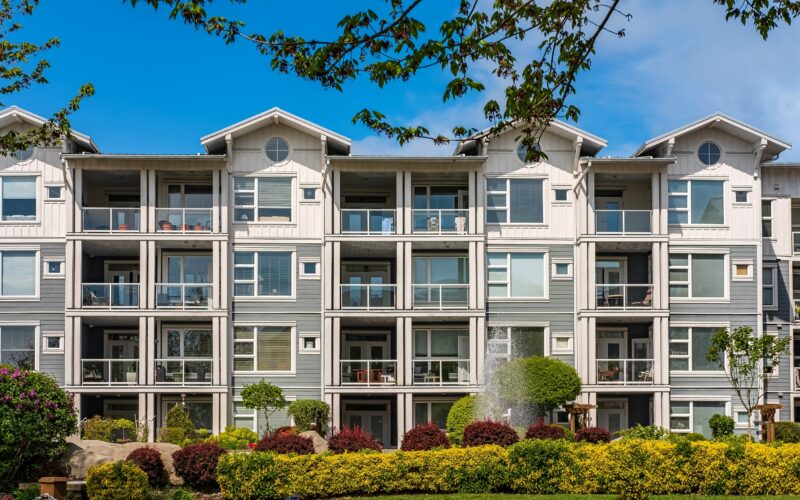Income-based apartments provide affordable housing for individuals and families with low income by basing rent costs on their income, typically capping rent at around 30% of a tenant’s income. These apartments are part of government-supported programs designed to alleviate housing costs for low-income residents. Programs like Section 8 and Public Housing are common options, providing rental assistance to those in need. Let’s explore how these apartments work, the eligibility criteria, and the application process to help you navigate the world of affordable housing.
How Do Income-Based Apartments Work?
Income-based apartments adjust rent based on the tenant’s income level and household size, often using a percentage of gross monthly income to set rental costs. This calculation keeps housing costs manageable for low-income residents, reducing financial strain. Income limits, set by the U.S. Department of Housing and Urban Development (HUD), determine eligibility for these apartments. Factors like household size, median income in the area, and total earnings affect whether applicants qualify for income-based housing.
Types of Income-Based Housing Programs
1. Section 8 Housing Choice Voucher Program
The Section 8 Housing Choice Voucher Program offers rental assistance by providing vouchers to eligible individuals and families. With these vouchers, tenants can select rental properties within certain areas, with HUD covering a portion of the rent directly to the landlord. While Section 8 provides flexibility, long waitlists and limited availability in high-demand areas can make securing a voucher challenging.
2. Public Housing Program
Public Housing programs involve government-owned apartments and houses reserved for low-income families, elderly individuals, and people with disabilities. These units are managed by local housing authorities and provide a reliable, affordable rental option in various locations. Applying involves meeting specific income requirements and following application procedures set by local authorities.
3. Low-Income Housing Tax Credit (LIHTC) Properties
The LIHTC program incentivizes private developers to create affordable housing by providing tax credits. Although LIHTC properties are privately owned, they operate under guidelines that ensure rental affordability. While these properties are affordable, they may cater to moderate-income families and offer a broader range of income-based housing options.
Eligibility Criteria for Income-Based Apartments
To qualify, applicants must meet income limits defined by HUD and local housing authorities, which vary by region. These limits are typically based on a percentage of the area’s median income and differ by family size. Priority is often given to seniors, individuals with disabilities, and veterans, though availability and specific eligibility criteria can vary significantly by location.
Examples of Income Limits in Various Cities
Income-based apartment eligibility limits vary widely by region. For example:
- San Jose, CA: For a family of four, low-income limits may be around $92,000 per year.
- Chicago, IL: Similar family income limits could be approximately $73,000. Understanding these limits is essential, as local income levels impact the qualification process.
Benefits and Challenges of Income-Based Apartments
Benefits
- Affordable Rent: Tenants benefit from rent calculations that reduce financial burden.
- Improved Quality of Life: Affordable housing can lead to a higher quality of life and better financial stability.
- Community Resources: Many income-based apartment communities provide access to supportive services.
Challenges
- High Demand: Due to limited availability, income-based apartments often have long waiting lists.
- Limited Location Options: These apartments may not be available in every neighborhood, potentially requiring relocation.
How to Apply for Income-Based Apartments
- Research Local Housing Authorities: Start by finding local housing authorities that manage affordable housing programs in your area.
- Complete the Application: Most applications require proof of income, identification, and information on household size.
- Prepare for Waiting Lists: Many programs have extensive waitlists. Keeping application information updated and applying to multiple locations can improve your chances.
- Explore Additional Resources: If wait times are long, consider other housing resources like emergency rental assistance programs.
Tips for Finding Income-Based Apartments Faster
- Regularly Check Listings: Frequently visit HUD-approved websites and local housing authority listings to find available units.
- Consider Private LIHTC Properties: LIHTC properties may have shorter wait times compared to traditional income-based apartments.
- Use Nonprofit Resources: Nonprofit organizations focused on affordable housing can assist with locating units and provide valuable resources for navigating the application process.
Frequently Asked Questions (FAQs)
How Long Are the Waiting Lists?
Waiting lists for income-based apartments can vary widely, from a few months to several years, depending on location and demand.
Are Income-Based Apartments Available for People with Disabilities?
Yes, many income-based apartment programs prioritize individuals with disabilities and offer accessibility options to accommodate various needs.
Can My Rent Increase if My Income Rises?
Yes, rent adjustments are possible if a tenant’s income increases significantly. Some programs periodically reassess income to ensure continued eligibility.
Are There Options for Immediate Housing While on a Waiting List?
While waiting for an income-based apartment, exploring emergency housing assistance or temporary rental programs may provide immediate relief.
Conclusion
Income-based apartments play a vital role in making housing more accessible and affordable for low-income families, seniors, and individuals with disabilities. With options like Section 8, Public Housing, and LIHTC properties, these programs offer a range of affordable living solutions. Applying for these apartments requires understanding eligibility criteria, being prepared for long waiting times, and actively seeking resources to expedite the process. By staying informed and prepared, you can increase your chances of finding affordable housing and achieving greater financial stability.






